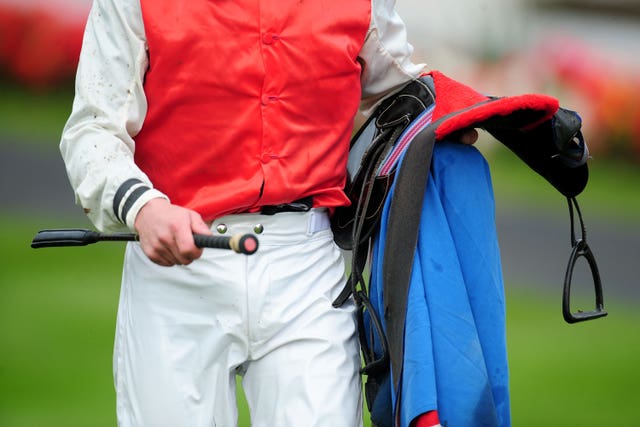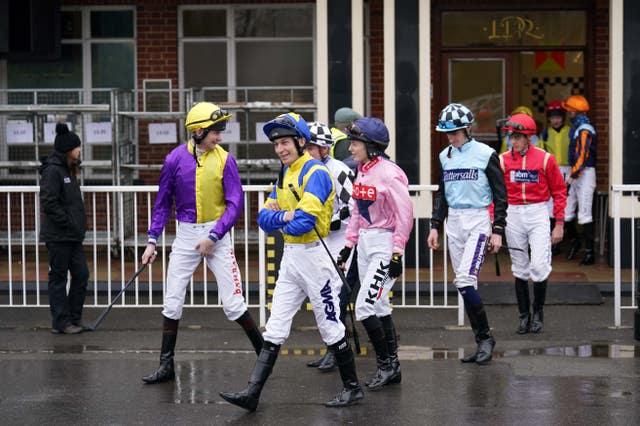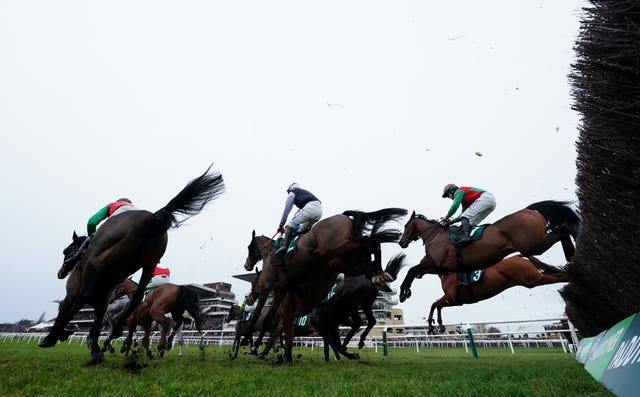New whip rules revised by BHA
Jockeys will still be allowed to use the whip in the forehand position under revised changes to riding rules – but the number of times a rider may strike his mount will be further reduced from February.
The British Horseracing Authority set out a raft of alterations to the rules in the summer, with jockeys only allowed to use the whip in the backhand position and serious breaches of the regulations to result in disqualification from races and possible 28-day bans for riders in major races.
However, a number of riders registered their disquiet over the proposed changes last month, particularly the implementation of the backhand-only position, with the BHA announcing further consultation to “explore options that address the concerns being raised”.

That further discussion has led to another set of revisions, with the backhand-only edict rescinded, although that change has resulted in a reduction to permitted strikes in a race.
Flat jockeys had been allowed to use their whip a maximum of seven times, with jump jockeys allowed eight instances. Both numbers have been reduced by one under the new regulations.
Under the initial set of a revisions, a jump jockey who used their whip 12 or more times – with 11 strikes or more for Flat jockeys – in any race could be disqualified, with those numbers also reduced to 11 and 10 respectively.
Following further consultation it was felt that jockeys who had suffered from shoulder or collarbone injuries may find use of the whip solely in the backhand position more challenging.

The removal of “discretion” by the stewards has also been announced, meaning every use of the whip shall count towards the threshold unless clearly used for safety purposes.
Penalties for going above the new thresholds will also be further increased from those announced previously.
The implementation of the new rules remains January 9 for a four-week bedding-in period. The new rules will come into full force for jump jockeys on February 6.
Flat counterparts begin with a bedding-in period on February 27, with full implementation from March 27.
David Jones, regulatory independent non-executive director for the BHA, and chair of the Whip Consultation Steering Group, said: “An extremely thorough consultation was carried out over the course of 2021 and 2022, followed by an extensive technical discussion phase after the publication of the recommendations in July this year.
“Efforts were taken to listen to the views of jockeys from both codes, over many hours. This consultation has arguably been the most thorough undertaken by the BHA in relation to any specific regulatory reform in the past.
“In order to ensure that this process was suitably rigorous we pushed back the planned autumn implementation date for new rules.
“However, we are committed to listening to our participants, and when further views and information come to light very late in the day, and following the conclusion of that process, we were duty bound to consider it, and make representations to the BHA board accordingly.”

The BHA board insists the changes do not “reflect a dilution of the package of rule changes” in their view, but is “a method of achieving the same outcomes through a different approach”.
BHA chair Joe Saumarez Smith said: “The BHA board had previously endorsed the clear set of objectives set out by the Whip Consultation Steering Group in the summer. They included that the perception of whip use must be improved by ensuring that its use is more judicious and better controlled.
“It became clear through the views raised in the last few weeks, and which were presented to the BHA board, that the backhand-only rule could potentially have caused difficulties for some riders. However, in considering making changes it was essential that the BHA board were not doing anything to dilute the outcome of the whip report.
“The BHA board has therefore agreed these further changes, which resolve the issues with the backhand-only rule, but retain the objective of making whip use visibly more palatable to the public, therefore helping to safeguard engagement with the sport amongst our fans present and future.
“We now hope and expect to see these new rules being respected and a visible change in whip use to be brought about amongst our jockeys, and those riding over here.
“The board also expressed the view that the sport should try to avoid any situation arising again whereby, following the conclusion of an extensive consultation process, further pertinent information comes to light. This point has been strongly emphasised to the PJA and we are pleased that the PJA has agreed to review its consultation processes in the light of this.”
Ian McMahon, chief executive of the Professional Jockeys Association, said: “The jockeys are keen to work with the authorities in implementing high standards for correct use of the whip.
“We also take on board the comments of the BHA board and will be looking to constantly review our processes, which will include making sure that the Jockey Advisory Groups (JAGS) or nominated working groups are actively involved in future consultations.”
Under the revised penalties, should any jockey now use their whip four times above the permitted level, they will be banned for 14 days (up from 10) and be disqualified, with five strikes above leading to disqualification and a 20-day ban (up from 14).
One strike above the permitted level will now be a four-day ban, as opposed to the three which was announced in November. Two above is seven days instead of five, with three above 10 days instead of seven.
All penalties in class one and two races will be doubled, meaning a 40-day ban is possible for those using their whip five times above the permitted number in those races.









